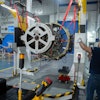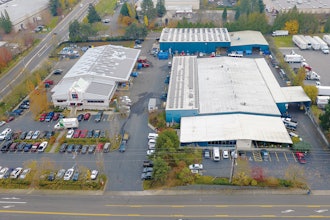I get to work with all types of food and beverage manufacturers, and one thing they all have in common is that they are all constantly developing and implementing a continuous improvement plan to ramp up production efficiency to increase throughput and profitability. Those that are successful show improvement and employ a solution that considers all aspects of the business. Let’s look at three key areas.
Understanding Demand
First, you can only optimize operations once you understand the ebbs and flows of your demand. Thankfully, there are a number of advanced planning and scheduling tools available to make this happen. With advanced planning and scheduling in place, companies gain a better understanding of how much demand varies based on the time of year or the promotions they’re running and can reflect these in their production schedule.
Having personally worked in fruit processing businesses, I understand the challenge of seasonal availability of raw materials for finished products you must have available all year long. This seasonality of raw materials, as well as seasonality of demand for certain finished goods, impacts planning where the cost of production and inventory needs to be balanced with the availability and cost volatility of ingredients.
As an example, Organic Valley needed an automated way to pull together supply and demand planning and forecasting to optimize the manufacturing and distribution of dairy, meat and produce products nationwide. The company increased its efficiency by implementing a new enterprise resource planning (ERP) and advanced planning and scheduling tool to effectively forecast and schedule demand. Organic Valley is now saving $2 million dollars per year and achieving operational efficiencies by optimizing its production plan against raw materials and variability of demand.
But planning is futile if you don’t have a good asset management plan in place.
Maximizing Uptime
In today’s 24/7 manufacturing environment, companies must maximize uptime while minimizing maintenance and, ultimately, capital expense.
This is critical for companies of all sizes, but especially small to mid-sized businesses. Whereas larger companies often have redundant equipment to meet their large demand and to provide back-up in the event of downtime, smaller plants are often operating with no back-up on many machines, and when one breaks, they’re out until repairs can be made.
Many plants also have unique assets that are used just periodically to support specialty products. While not used frequently, they must be maintained so they can be put to work when the occasion arises, otherwise a manufacturer may miss out on selling a specialty product that drives greater profit margins.
Understanding your assets and how to maximize their throughput is another key to improving efficiency. By putting an equipment asset management strategy in place, Brewster Dairy, the largest manufacturer of all-natural Swiss cheese in the U.S., realized 10 to 11 percent improvement using enterprise asset management and embracing lean practices. The company also dropped maintenance costs by 5 to 10 percent, reaching world-class levels of maintenance inventory management equal to 1 percent of estimated replacement value.
Embracing Formula-driven Efficiency
Finally, an often overlooked efficiency driver is the actual formula or recipe used in the plant. A number of tools exist to both optimize your formulas and keep them optimized as variables such as ingredient composition and consumer tastes vary. Looking back to my time in fruit processing, I dealt with how much the makeup of raw materials (from size to nutritional makeup) changes. Integrated product lifecycle management tools can help you create and continually modify formulations to take advantage of readily available raw materials, as well as their changing makeup. It can also help in reducing the number of similar raw materials, especially in plants with a large number of finished goods formulations.
Product lifecycle management tools are designed to ensure that the finished product meets labeling and specification requirements. Therefore, a product lifecycle management solution can also improve efficiency in creating new products. Furthermore, it will give you greater confidence that new products will meet the needs of consumers and regulators.
No matter whether you are in a highly seasonal business or a more routine one (if there is such a thing in the food business), concentrating on these three hot button areas of production efficiency will ensure a well-rounded approach, and keep you competitive.
Michael Edgett is director of industry marketing, process manufacturing at Infor where he is responsible for the company’s strategic direction in the food, beverage, chemicals and life sciences markets. Prior to joining Infor, Michael served in senior business-to-business marketing positions at food manufacturing and software industry leaders including Quaker Oats, Bunge, Bordens, Arris and Movius.























